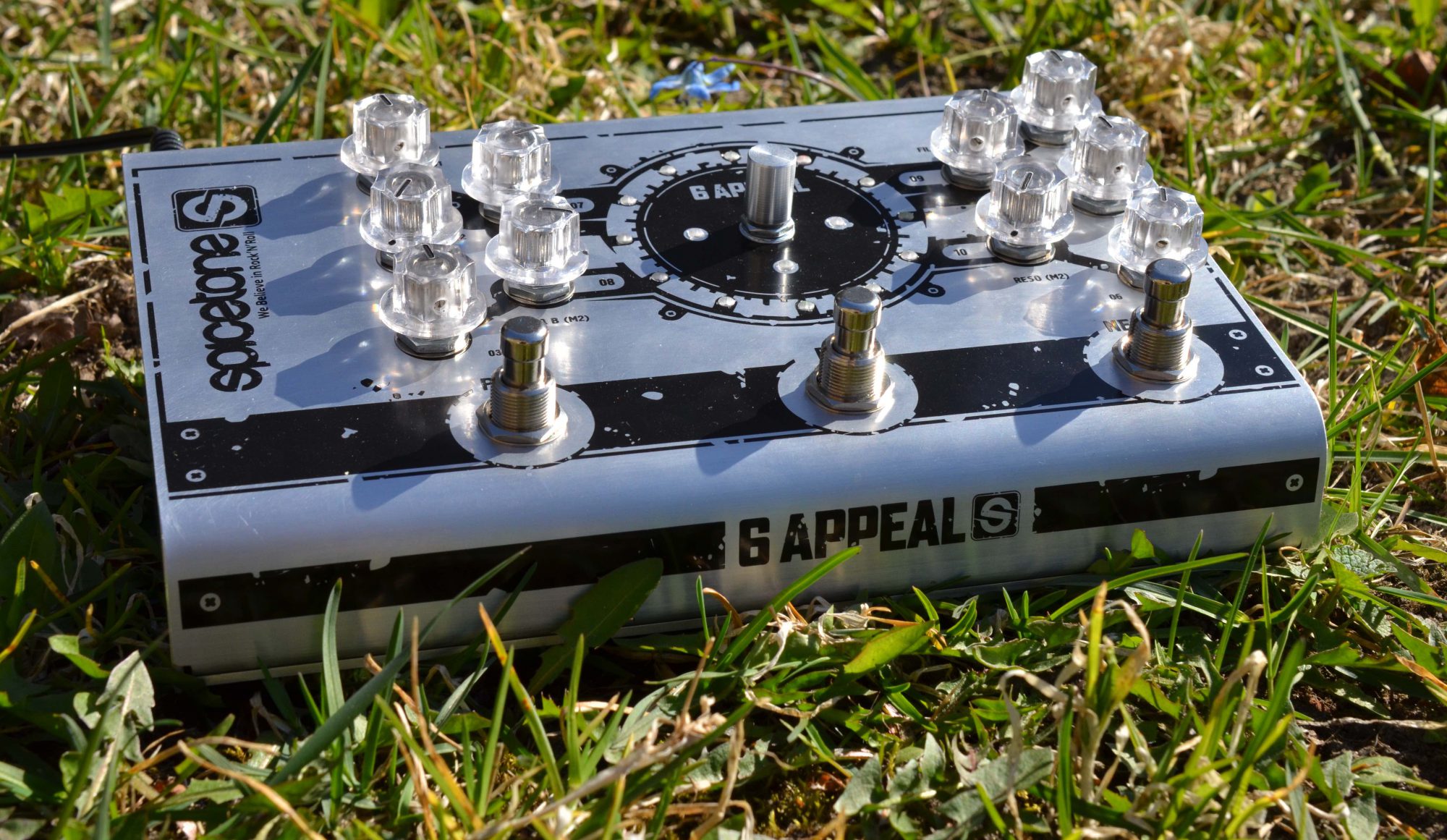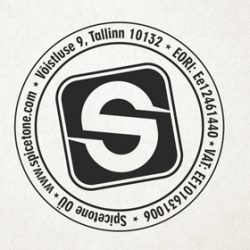FAQ – Frequently Asked Questions
What is Hexaphonic Processing?
Hexaphonic processing means that each strings of a six string guitar is processed separately. Multichannel or Polyphonic processing would be more correct way to put is. For processing strings individually, one need a special kind of guitar pickups that can capture a separate signal for each string. These pickups are referred to as divided, MIDI, synth, synth access, V-Guitar, hex, hexaphonic, multichannel or polyphonic pickups.
What is 6APPEAL?
6APPEAL is an analog effect pedal, the difference being it has 6+1 channels internally, for each string. It processes the natural guitar signal from a hexaphonic pickup. It works best with guitars that have 13pin “MIDI synth output” but it is not a synth! And the sound signal is alway fully analog. Take it apart – there are no AD or DA converters inside.
That being said, our technology is “digitally controlled analog processing” as we do use a microcontroller to… well… control the circuit. This allows users to save presets and recall them later – we hope this supports for live use of the module. We have detailed MIDI control features, too. There are three different distortion types (overdrive/crunch/fuzz), based on different electronic circuit topologies.
6APPEAL has mono and stereo outputs and each string can be panned separately in the stereo field. And the stereo output signal can be processed with resonant low pass filter to get some pronounced overdrive sounds.
There are also possibilities to modulate module parameters with internal step sequencer and/or (two) LFOs. And some envelope processing possibilities. All the parameters can also be controlled externally via MIDI. Different processing can be applied to different strings. And finally the break-out-box functionality, which helps you get all six channels out of the module. 6Appeal provides strong healthy signal level for computer recording purposes, for instance. All in all, thanks to the digital control, the box packs a lot of features, like 13pin digital processors, but sound wise it is pure analog sound. We hope this makes sense.
What makes your system better than the usual 13 pin DIN digital systems?
We do not say that 6APPEAL is better than 13pin digital systems like Vguitar stuff by Roland. But it sure is different sound wise. Many people prefer pure analog sound processing to digitally processed sound, especially when it comes to overdrive/distortion effects. We simply carry this ideology to hexaphonic guitar signal processing domain.
Estonian guitarist Tõnis Leemets commented that you cannot get this sound digitally. It sure is encouraging! Tõnis is an experimentalist from Guitar Weekend Trio and he is a long time Roland 13pin systems user (VG-8 and GR-55). Some people have suggested that our 6APPEAL module may work well for jazz musicians, too.
How does a signal from 13pin DIN output sound palatable. It’s meant for MIDI, isn’t it?
There’s nothing much wrong with the signal, even if you use hexaphonic piezo pickups. Just in case, a special feature, we call it the Root Boost, gives your sound more low end (root frequency) juice; this is useful if you use Roland divided pickups (GK-2, GK-3) mounted close to bridge.
And yes, 13pin output is normally meant for MIDI but it’s fully analog; MIDI devices make it digital themselves. Many people use divided pickup’s signal to get acoustic guitar sounds on electric instrument. Check out Acousti-Phonic by Graphtech as an example.
Can I combine 6APPEAL with other devices?
You’re welcome to combine 6APPEAL with your Roland, VG-99, GR-55 or Boss GP-10 or any other sound processor; it’s a great combo, we have used it with GR-55 a lot. You can even get some additional features with Roland stuff – for example, take envelope from there and control 6Appeal’s any parameter with it. You’d get polyfuzz with ADSR control – just like the old days… You’d have to spend piles of money to buy a refurbished 1970ies ARP guitar synth… Or you can opt for 6APPEAL with a GR/GP device. You can also route the signal to your PC and have an envelope created from there.
If you like computers, take 6APPEAL and your 13pin guitar and use it as Breakout Box. Your can route 6+1 separate channels (6 strings and one summed signal) to your soundcard and DAW, either clean or overdriven, and process it further on.
6APPEAL has modulations. You can make any parameter move automatically in time, creating unheard tremolos, vibes, panning effect, wahwah and much more. You are not limited to internal LFO rate and Tap Tempo. Tempo can be synced to any external piece of gear, too, via MIDI. Even more – you can use 6APPEAL to control external gear.
Can I control 6APPEAL with iPad or PC (DAW like Ableton Live)?
Yes. You need a MIDI interface for that. These come cheap nowadays and some are not much larger than a cable with jacks. You can set up any MIDI controller software pretty easily. Let us know of your progress as we haven’t had much time to work out nice and supported solutions, but we have tried some setups – it does works nicely.
Also, there is a MIDI Patch for Max MSP / Ableton Live with Max. This is created by Enda Bates and tested to work with Ableton Live with Max. Just drag an empty Max instrument to a new MIDI track, click Edit Button and under File, load the patch (save it to disk beforehand). Please accept the fact that this is not a ready made and supported feature; feel free to use it as a building block.
Whoa! This is expensive… for a guitar pedal.
Well, we would love to be able to sell 6APPEAL for less money. We invested a long time calculating and recalculating the BOM. It’s over one thousand analog components, high grade ARM processor, really sturdy anodised aluminium enclosure… It’s practically a computer plus seven analog overdrive channels in one box. Imagine, seven distortion boxes and a netbook. We were tempted to make it in China but we didn’t. We were tempted to use cheaper components but we didn’t – check it, even the output jacks are gold plated. In exchange you have real versatility and a box you can hook up with other devices. An average guitar pedal is, when you’ve set the controls, a one button affair – on and off. 6Appeal is so much more!
Where did you get this crazy idea?
There are many guitars around with 13pin divided pickups (Roland GK, Godin RMC etc). Decades ago there were some analog guitar synths around that gave you polyphonic distortion (poly fuzz) with divided pickups. These were extremely expensive. There were many manufacturers in the 1970s such as Hammond Innovex & Ovation, Ludwig, Norlin Music/Maestro, EMS, 360 Systems, Ampeg & Hagström, Arp, Roland Corporation (GR 300, GR 700) & FujiGen, Electro-Harmonix. Other notable manufacturers include New England Digital, Terratec/Axon, Starr Labs, Ibanez, Casio, Holt Electro Acoustic Research, Zeta Systems, and Yamaha.
Then came digital era. Analog polysynths were discontinued, MIDI and digital took the lead. In no way this is a tragedy. We like innovation. There is nothing wrong in using digital synths and, for example, to use your guitar as a MIDI controller to play synthetic piano or tuba or saxophone or drum or flugelhorn samples. Just that this is not a guitar sound, then. We in Spicetone prefer to have guitar sound, too, if it’s a guitar that is played.
Basically, with 6APPEAL, we give your 13pin guitar a new use. Use if for analog rock’n’roll!:D
Why do you do this?
First of all, the man behind the idea is Rein Sabolotny. He’s a very experienced electronics engineer; some circuits created under his lead have sold millions of copies in smartphones etc. But for decades his passion has been music and music technology. Recently he decided that it’s now or never, and so me, Vahur (contacts with musicians, marketing, design) and Taivo (second engineer) have teamed up with Rein to make something really cool and different; it feels great, a pioneer kind of kick, I’d say. Obviously this is not a highly profitable project, even though our technology, digitally controlled analog circuits, could yield a lot if applied in other fields. Innovation is merciless drug but it does feel great:I)
What’s next?
We do have a few other modules in mind. But, these make sense only if our first module finds support from musicians.
If the analog hexaphonic signal processing is going to take off, we may think also of an analog guitar synth based on our electronic technology. A special feature of our approach is that if we create other 13pin boxes, too, these can be daisy chained just as conventional guitar pedals.
Besides that we have a couple or great ideas for monophonic guitars, too.

